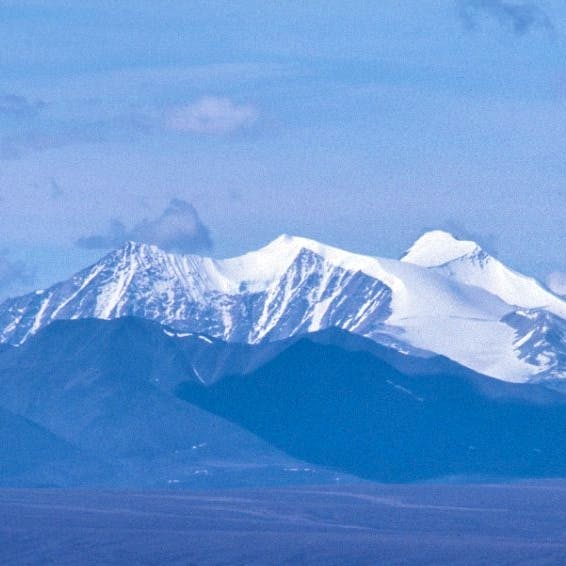New Studies Indicate Protected Areas Needed to Conserve Greater Sage-grouse
Washington, D.C. (July 22, 2013) – A new report by the U.S. Geological Survey (USGS) and other peer-reviewed research published this spring indicate that conserving Greater Sage-grouse will require both protecting large areas of habitat and making significant changes in land management to reverse population declines of this wide-ranging species. Federal agencies are currently engaged in an unprecedented, westwide planning process to conserve and restore the species.
“We appreciate the Obama Administration taking on this unprecedented conservation initiative and the tremendous opportunity it offers to create a lasting legacy of protected western landscapes and sustainable management,” said Matthew Kirby of Sierra Club. “The best available science indicates that without the creation of protected areas, grouse populations will continue to decline.”
The new USGS study (Manier et al. 2013), which was commissioned by the Interior Department’s Bureau of Land Management (BLM), indicated that preserving large, relatively undisturbed expanses of sagebrush habitat will be important to sage-grouse conservation. The same USGS study assessed threats to priority conservation areas and found that a significant percentage of these areas have already been degraded, and that most of these areas are already affected by multiple stressors that will continue to impact sensitive sage-grouse.
“It remains to be seen how federal planners ensure that large expanses of intact sagebrush habitat will be protected to secure and recover sage-grouse populations, as the USGS report would advise,” said Steve Holmer of American Bird Conservancy. “We are concerned that the first draft plans released as part of the planning process will be inadequate to prevent further declines in sage-grouse populations.”
A study by Copeland et al. (2013) assessing the Wyoming “core area” conservation strategy, which some BLM plans have also adopted, predicted that conservation measures it recommends will reduce the sage-grouse’s population decline, but will not stabilize grouse numbers or provide for the species’ recovery. Another study by Knick et al. (2013) found that sage-grouse appear to need greater protection than provided by the Wyoming core area strategy.
“Sage-grouse are a landscape species, and they need large, protected landscapes to survive,” said Mark Salvo of Defenders of Wildlife. “The federal planning effort is off to a shaky start, but incorporating findings from this new research will help steer the process back on course.”
New Research Relevant to Sage-Grouse Conservation
Knick, S. T., S. E. Hanser, K. L. Preston. 2013. Modeling ecological minimum requirements for distribution of greater sage-grouse leks: implications for population connectivity across their western range, U.S.A. Ecology and Evolution, available at http://onlinelibrary.wiley.com/doi/10.1002/ece3.557/pdf.
- Sage-grouse require sagebrush-dominated landscapes with minimal levels of anthropogenic disturbance. Ninety-nine percent of remaining active sage-grouse leks were in landscapes with less than 3 percent disturbance within 5 km of the lek, and 79 percent of the area within 5 km was in sagebrush cover. The Wyoming core area strategy allows for 5 percent disturbance.
Copeland, H. E., A. Pocewicz, D. E. Naugle, T. Griffiths, D. Keinath, J. Evans, J. Platt. 2013. Measuring the effectiveness of conservation: a novel framework to quantify the benefits of sage-grouse conservation policy and easements in Wyoming. PLoS ONE 8(6): e67261. doi:10.1371/journal.pone.0067261. Available at www.plosone.org/article/fetchObject.action?uri=info%3Adoi%2F10.1371%2Fjournal.pone.0067261&representation=PDF.
- Modeling indicates that the Wyoming sage-grouse core area conservation strategy, fully applied, plus $250 million invested in targeted conservation easements, would slow, but not stop projected sage-grouse population declines in the state. The Wyoming core area policy prohibits or restricts surface occupancy within 0.6 miles of sage-grouse leks, generally limits development to one site per 640 acres, and limits cumulative surface disturbance to 5 percent per 640 acres in core habitat.
Manier, D. J., D. J. A. Wood, Z. H. Bowen, R. M. Donovan, M. J. Holloran, L. M. Juliusson, K. S. Mayne, S. J. Oyler-McCance, F. R. Quamen, D. J. Saher, A. J. Titolo. 2013. Summary of science, activities, programs, and policies that influence the rangewide conservation of greater sage-grouse (Centrocercus urophasianus). U.S. Geological Survey, Open-File Report 2013–1098; available at http://pubs.usgs.gov/of/2013/1098/.
- Protecting the isolated pieces of intact and well-functioning sagebrush ecosystems, and improving, mitigating, and restoring less functional ecosystems, if well-informed, coordinated, and wide-ranging, should contribute to reducing the impacts of previous land uses and land-use patterns on current habitat conditions and population trends.
- Sage-grouse populations generally rely on large, interconnected expanses of sagebrush to accommodate local migrations and access to seasonal habitats distributed within their inhabited range, and “fragmentation” represents the dissection of large expanses via various mechanisms. The size of a landscape needed to support breeding habitats of an interspersed population (for example, an area with multiple leks spaced less than 6.2 miles [10 km] apart) may exceed 247,000 acres (internal citations omitted).
###
Contacts: Steve Holmer, American Bird Conservancy, 202-234-7181 x 216, sholmer@abcbirds.org
Courtney Sexton, Defenders of Wildlife, 202-772-0253, csexton@defenders.org
Virginia Cramer, Sierra Club, 804-225-9113 x 102, virginia.cramer@sierraclub.org
Defenders of Wildlife is dedicated to the protection of all native animals and plants in their natural communities. With more than 1 million members and activists, Defenders of Wildlife is a leading advocate for innovative solutions to safeguard our wildlife heritage for generations to come. For more information, visit www.defenders.org and follow us on Twitter @DefendersNews.
For over 75 years, Defenders of Wildlife has remained dedicated to protecting all native animals and plants in their natural communities. With a nationwide network of nearly 2.1 million members and activists, Defenders of Wildlife is a leading advocate for innovative solutions to safeguard our wildlife for generations to come. To learn more, please visit https://defenders.org/newsroom or follow us on X @Defenders.
News

Defenders Slams Trump Interior Pick Burgum

